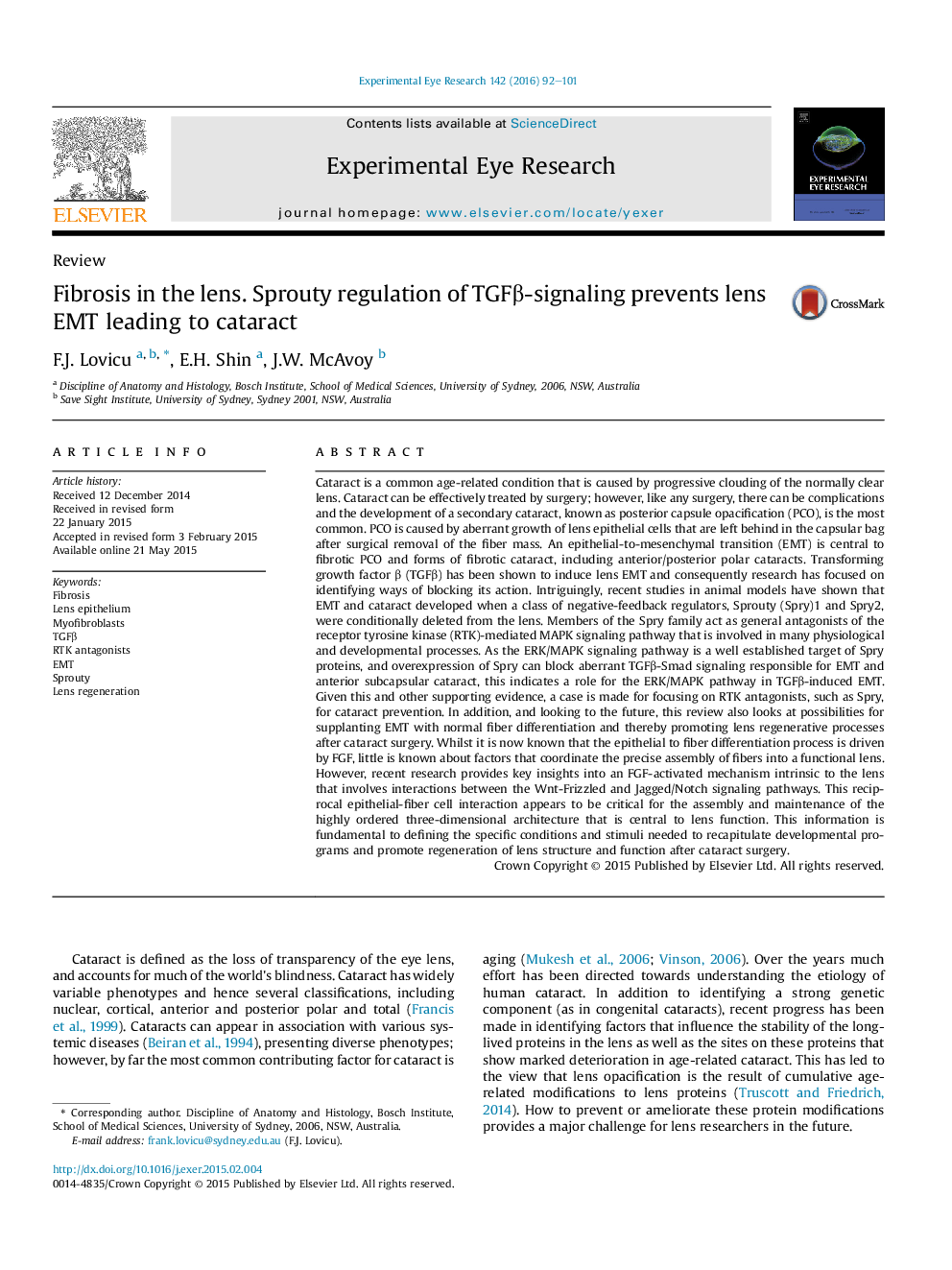| کد مقاله | کد نشریه | سال انتشار | مقاله انگلیسی | نسخه تمام متن |
|---|---|---|---|---|
| 4011118 | 1602580 | 2016 | 10 صفحه PDF | دانلود رایگان |
• EMT and cataract develop when Spry1 and Spry2 are conditionally deleted from the lens.
• Given ERK/MAPK signaling is a target of Spry proteins, and Spry can block aberrant TGFβ-Smad signaling responsible for EMT, this indicates a role for the ERK/MAPK pathway in TGFβ-induced EMT.
• Reciprocal interactions between the Wnt-Frizzled and Jagged/Notch signaling pathways between epithelial-fiber cells appear to be critical for the highly ordered 3D-architecture that is central to lens function.
• A better understanding of TGFβ-signaling regulation, together with promoting regeneration of lens structure after cataract surgery, may lead to prevention of PCO.
Cataract is a common age-related condition that is caused by progressive clouding of the normally clear lens. Cataract can be effectively treated by surgery; however, like any surgery, there can be complications and the development of a secondary cataract, known as posterior capsule opacification (PCO), is the most common. PCO is caused by aberrant growth of lens epithelial cells that are left behind in the capsular bag after surgical removal of the fiber mass. An epithelial-to-mesenchymal transition (EMT) is central to fibrotic PCO and forms of fibrotic cataract, including anterior/posterior polar cataracts. Transforming growth factor β (TGFβ) has been shown to induce lens EMT and consequently research has focused on identifying ways of blocking its action. Intriguingly, recent studies in animal models have shown that EMT and cataract developed when a class of negative-feedback regulators, Sprouty (Spry)1 and Spry2, were conditionally deleted from the lens. Members of the Spry family act as general antagonists of the receptor tyrosine kinase (RTK)-mediated MAPK signaling pathway that is involved in many physiological and developmental processes. As the ERK/MAPK signaling pathway is a well established target of Spry proteins, and overexpression of Spry can block aberrant TGFβ-Smad signaling responsible for EMT and anterior subcapsular cataract, this indicates a role for the ERK/MAPK pathway in TGFβ-induced EMT. Given this and other supporting evidence, a case is made for focusing on RTK antagonists, such as Spry, for cataract prevention. In addition, and looking to the future, this review also looks at possibilities for supplanting EMT with normal fiber differentiation and thereby promoting lens regenerative processes after cataract surgery. Whilst it is now known that the epithelial to fiber differentiation process is driven by FGF, little is known about factors that coordinate the precise assembly of fibers into a functional lens. However, recent research provides key insights into an FGF-activated mechanism intrinsic to the lens that involves interactions between the Wnt-Frizzled and Jagged/Notch signaling pathways. This reciprocal epithelial-fiber cell interaction appears to be critical for the assembly and maintenance of the highly ordered three-dimensional architecture that is central to lens function. This information is fundamental to defining the specific conditions and stimuli needed to recapitulate developmental programs and promote regeneration of lens structure and function after cataract surgery.
Journal: Experimental Eye Research - Volume 142, January 2016, Pages 92–101
